| Columns Retired Columns & Blogs |
Best thing to happen to smartphone music since smartphone music ......... AQ DragonFly :-) .........
I measured the AudioQuest DragonFly Cobalt with my Audio Precision SYS2722 system (see the January 2008 "As We See It"). I performed a full set of tests with WAV and AIFF test-tone files played with Pure Music 3.0 on my MacBook Pro running on battery power, and on my iPhone 6S using a Lightning to USB adapter.
A Drok USB tester (footnote 1) indicated that with no signal being passed, the Cobalt drew 50mA of current from the host's USB port, compared with the Red's 30mA. (Both measurements are ±5mA.) So while the Cobalt's microcontroller chip draws less current than that of the Red, overall the new DAC is a little more hungry for power.
Apple's USB Prober utility identified the DragonFly as "AudioQuest DragonFly Cobalt v1.0" from "AudioQuest" with the serial number string "AQDFCB0101003766." The USB port operated in the optimal isochronous asynchronous mode, and Apple's AudioMIDI utility revealed that the Cobalt accepted 24-bit integer data sampled at all rates from 44.1 to 96kHz. The Cobalt's maximum output levels at 1kHz into a high 100k ohm load was 2.16V, compared with 2.04V for the DragonFly Red and 1.19V for the Black. The Cobalt preserved absolute polarity (ie, was noninverting), and like the Red and Black offered a very low output impedance of <1 ohm. (I measured 0.45 ohm from 20Hz to 20kHz, but the margin of error with this method of estimating output impedance is large with low impedances, so safer to say <1 ohm.)
Fig.1 shows the DragonFly Cobalt's impulse response with 44.1kHz data. Whereas the Red's and Black's impulse response was typical of a minimum-phase reconstruction filter, with a fairly large amount of ringing following the single full-scale sample (footnote 2), the Cobalt's impulse response is a short minimum-phase type, similar to but not quite as short as the "Listen" filter used in Ayre's Digital processors (footnote 3). Like all short filters, the ultrasonic rolloff starts in the top octave of the audioband (fig.2, magenta and red traces) and reaches full stop-band attenuation at 28kHz. The aliased image at 25kHz of a full-scale tone at 19.1kHz (cyan, blue) was suppressed by 34dB compared with the Red's >110dB. Like the DragonFly Red, the harmonics associated with the 19.1kHz tone all lie below –80dB. Fig.3 shows the Cobalt's frequency response with data sampled at 44.1 and 96kHz. With 44.1kHz data, the rolloff reaches –0.2dB at 15kHz and –3dB just below 20kHz. Not only is this not a very large "area under the curve," but that area is also in a region where human hearing sensitivity is significantly reduced compared with frequencies below 15kHz. I doubt that this rolloff will be audible.
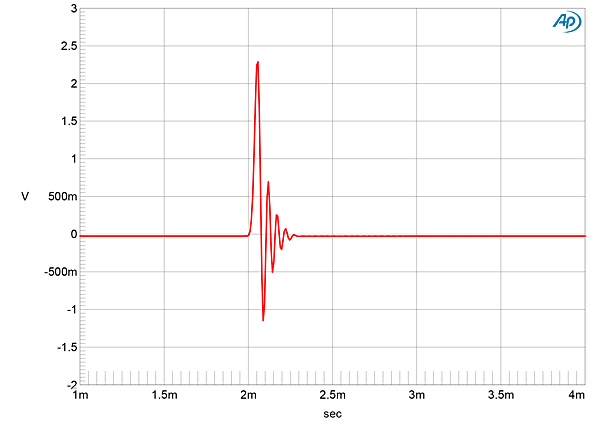

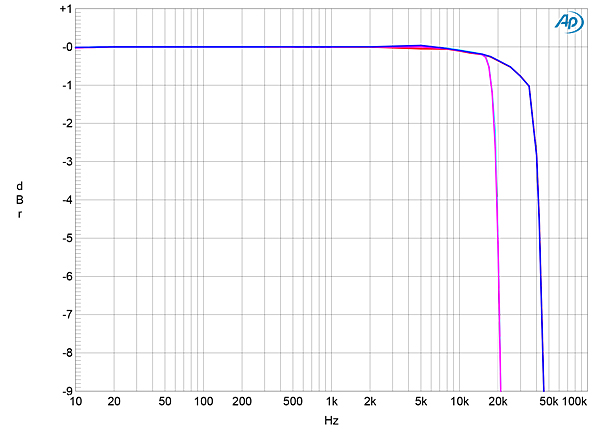
Channel separation at 1kHz was very good, at 87.4dB R–L and 90.2dB L–R, decreasing to 81.9 and 85.6dB, respectively, at 20kHz. An increase in bit depth from 16 to 24, with dithered data representing a 1kHz tone at –90dBFS, dropped the Cobalt's noise floor by 10dB (fig.4), suggesting a resolution of almost 18 bits, which is good for a USB-powered DAC. The Cobalt readily resolved a tone at –120dBFS (fig.5). When I played undithered data representing a tone at exactly –90.31dBFS, the waveform was symmetrical, with a negligible 25µV DC offset, but the three DC voltage levels described by the data were obscured by high-frequency noise (fig.6).
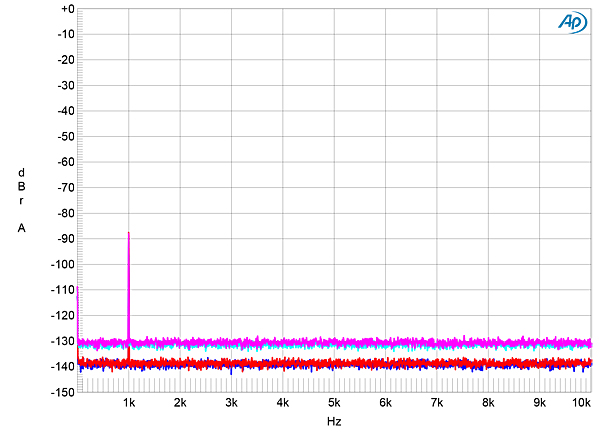
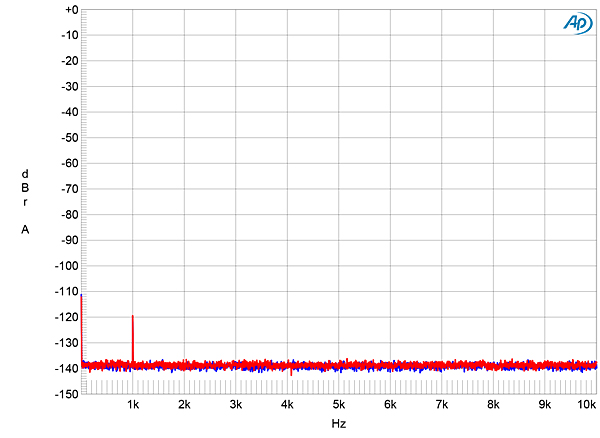
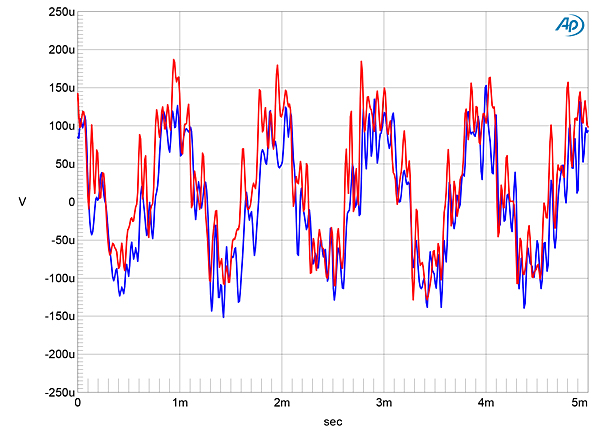
The Cobalt produced low levels of harmonic distortion with the high 100k ohm load (fig.7), with the subjectively benign second harmonic the highest in level. However, the DragonFly will primarily be used with headphones that have impedances as low as 20 ohms. As I had found with the Red, I had to reduce the signal level to –3dB, 1.53V, with a 300 ohm load to avoid clipping the output (fig.8; the bottom halves of the waveform were clipped). The DragonFly overloaded at the same level into a 50 ohm load (equivalent to an output current of approximately 30mA), and into 30 ohms, I had to lower the signal level to –6dB to reduce the harmonic distortion to an appropriately low level (fig.9). AudioQuest says that 16 ohms is the lowest load with which the DragonFly Cobalt should be used—with 10 ohms, which is close to the minimum impedance of my Ultimate Ear 18 Pro in-ear monitors, the Cobalt's output clipped at levels above –12dBFS (fig.10). It is fair to note, however, that at the highest levels I used with the Ultimate Ears, I didn't hear any distortion.
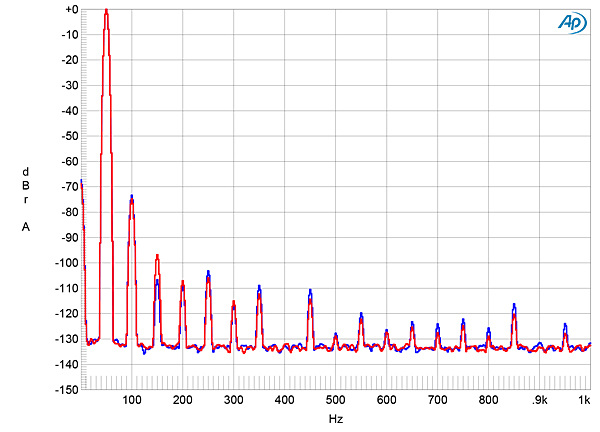
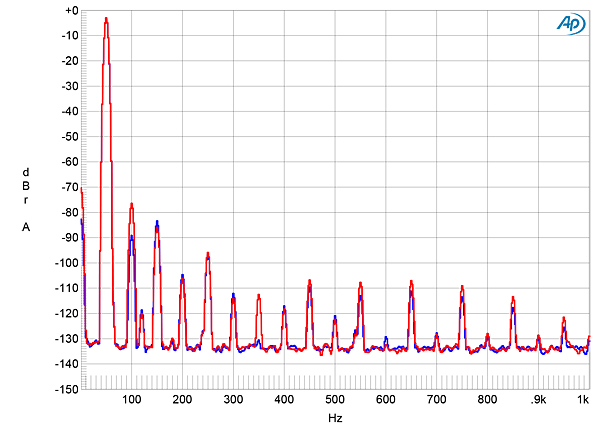

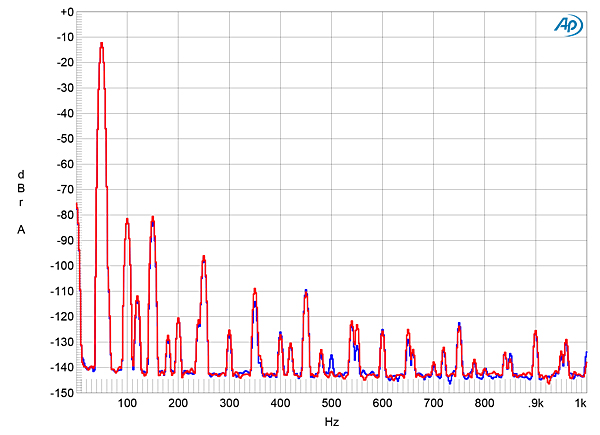
The DragonFly Cobalt offered low levels of intermodulation distortion when reproducing an equal mix of 19 and 20kHz tones at –3dBFS into 300 ohms (fig.11), the difference tone at 1kHz lying close to –90dB (0.003%). However, the slow rolloff of the reconstruction filter means that the aliased images of the 19kHz and 20kHz tone were only suppressed by 24dB or so. The DragonFly Cobalt offered excellent rejection of word-clock jitter. Fig.12 shows the spectrum of the Cobalt's output when it was fed high- level 16-bit J-Test data. Other than the sidebands at ±229.7Hz, all the odd-order harmonics of the undithered low-frequency, LSB-level squarewave lie at the correct levels and there are no other sideband pairs visible. The spectrum with a 24-bit J-test signal was clean.
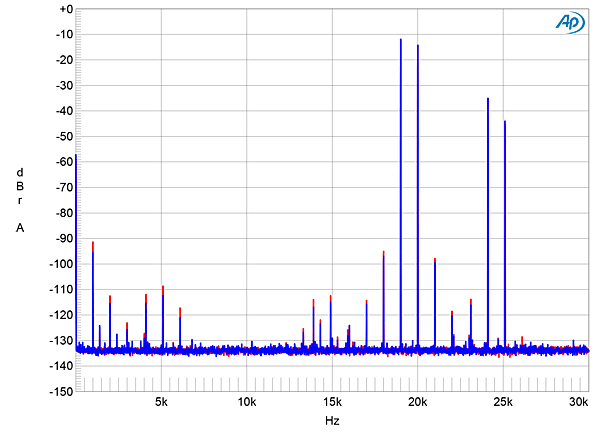

Overall, AudioQuest's DragonFly Cobalt performed well on the test bench.—John Atkinson
Footnote 2: See fig.1 here.
Footnote 3: See fig.1 here.

Best thing to happen to smartphone music since smartphone music ......... AQ DragonFly :-) .........

That is something that is often overlooked in comparing audio components. Small differences get much more noticeable over time.

That is something that is often overlooked in comparing audio components. Small differences get much more noticeable over time.
Jim Austin examines the relevance of long-term listening in his "As We See It" essay in the January 2020 issue.
John Atkinson
Technical Editor, Stereophile

I've been gifting the Dragonflys since their introduction.
People love them, use them 100% of the time, look for them if they get misplaced and keep thanking me for them.
I've also given WristWatches from Long Island Watch. ( which tend to be nice but forgotten )
The cute little Dragonfly is what people mention to me.
The people, I gift, are not Audiophiles but won't listen without the Dragonfly plugged in. It significantly improves Sound Quality and always leads to "better" headphones. ( our people are buying and showing new headphones, constantly, it's exciting )
Overall, I'd say and think that these Dragonflys are probably "Gateway" devices to Audiophile "leanings", it presents music as a beautiful & accessable life component. In one case the Device led my recipient to purchase a record player. ( unintended consequences , oh dear ! )
Now, I "have-to" use the blue one ( instead of the dreaded RED one ) for nonsense political reasons.
And...
The Blue one is pricier to gift, darn it. ( I could just give the Black one which would be even better politically, if they still offer it )
Tony in Venice
ps. this thing has to be a respectable Audiophile device if the Editor of the World's most Authoritative Audiophile Journal owns one. Isn't JA1 the highest Authority that we Audiophiles had ? ( jus say'n ) Of course JA2 is equally brilliant and is also brave enough to take sides with MQA and the lovely Devialet stuff.
ps.2) Audioquest probably SHOULD gift every Dragonfly purchaser with a ONE Year Subscription to Stereophile, they'd be doing themselves and everyone else a HUGE favor!

JA1 is Apollo and JA2 is Orpheus :-) .......

I bought a couple of the original Audioquest Dragonfly units before any of the colored models were released. Performance is adequate for casual background listening, and I like the small form factor for some applications, but also that small form forces some compromise in some other applications (adapting mini-plug connectivity, lack of balanced output, lack of external volume knob, etc.).
For non-portable applications, look at the SMSL-500, $399 on Amazon.
https://www.audiosciencereview.com/forum/index.php?threads/smsl-m500-dac-and-hp-amp-review.9606/
SMSL-500 can sit on a table next to the listening chair, can drive most headphones, has external volume knob, and includes balanced output on the rear which can drive longish interconnects to amplifiers located adjacent to the loudspeakers.


For balanced XLR interconnects, look at Monoprice's Stage Right starquad microphone cable, XLR-M to XLR-F, gold plated contacts, 24AWG, 10ft, black, available in wide variety of lengths from 1.5_ft to 100_ft. The 50_ft length is priced under $20/cable, with two cables needed for stereo pair. Microphone cable works well for balanced interconnections, but tends to be more flexible, smaller in diameter, yet also more durably rugged in construction.

For non portable applications, one could also consider ......... the new, iFi Audio Zen DAC/headphone amp $130 :-) .........

If you want both SS and tube flavors, you can check-out iFi Audio Pro iDSD desk-top DAC/headphone amp ($2,499) reviewed by Stereophile :-) .........

Focusrite Scarlette 2i2 and the Steinberg UR22 USB 24192 interfaces. At about $150 each I would like to see how they compare as they are both I/O devices with built in Mic Preamps. I love mine even just for listening to computer audio. You can even use them for line level inputs.

I do have an original DragonFly v1.0 in my laptop bag, if I ever need a better listening experience on the go, which has been a rarity lately. As cool as the Cobalt seems, after getting burned for the initial $250 of the original, I'll wait for the price to come down, when the DragonFly Mauve is introduced. Great review, JA1!

https://gearpatrol.com/2019/12/13/best-new-products-of-2019/